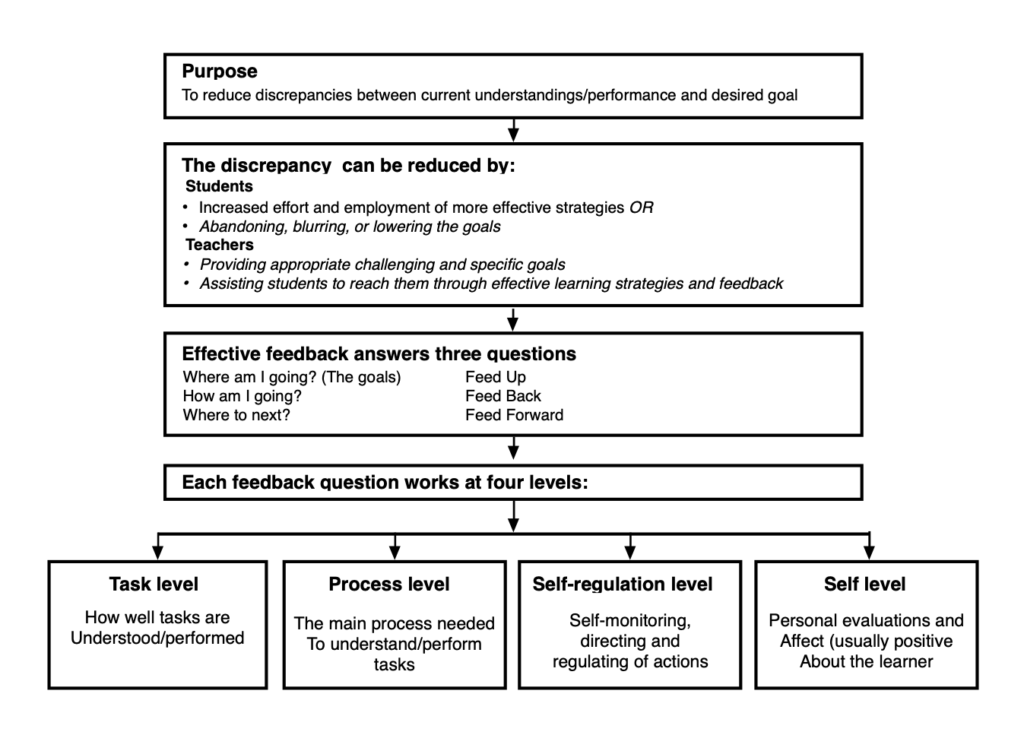Increasing students’ feelings of autonomy, competency, and relatedness can improve their intrinsic motivation (Deci & Ryan, 2000). How to accomplish this goal? Consider the design and delivery of feedback, including rubrics, written feedback, and audio/video feedback.
A Model of Feedback

Co-creating Rubrics
Why you should consider co-creating rubrics with students?
- Promotes autonomy
- Supports feet up and feedback
- Participating in a valued activity together increases likelihood of collective efficacy (Bandura, 2000)
Providing Written Feedback
Why should you consider providing written feedback focused on a student’s process and/or strategies?
- Promotes competency
- Supports feed up, feed back, and feed forward
Providing Audio and Video Feedback
Why should you consider providing audio and video feedback?
- Promotes relatedness
- Supports feed up, feed back, and feed forward
- More personal (Parkes & Fletcher, 2017)
- Higher quality and quantity (Parkes & Fletcher, 2017)
When formative feedback (written and/or audio/video comments) is combined with summative feedback (test score or grade), the benefits from the formative feedback disappear (Butler, 1998). What to do? Consider design options or assessment types that do not rely strictly on grades (Stommel, 2018), including:
- Grade-free zones
- Self-assessment / process letters
- Portfolio
References
Bandura, A. (2000). Exercise of human agency through collective efficacy. Current Directions in Psychological Science, 9, 75-78. doi: 10.1111/1467-8721.00064
Butler, R. (1988). Enhancing and undermining intrinsic motivation: The effects of task involving and ego-involving evaluation on interest and performance. British Journal of Educational Psychology, 58, 1–14.
Hattie, J., & Timperley, H. (2007). The power of feedback. Review of Education Research, 77(1), 81-112. DOI: 10.3102/003465430298487
Parkes, M., & Fletcher, P. (2017). A longitudinal, quantitative study of student attitudes towards audio feedback for assessment. Assessment & Evaluation in Higher Education, 42(7), 1046-1053. DOI: 10.1080/02602938.2016.1224810
Stommel, J. (2018, March 11). How to ungrade. Retrieved from https://www.jessestommel.com/how-to-ungrade
